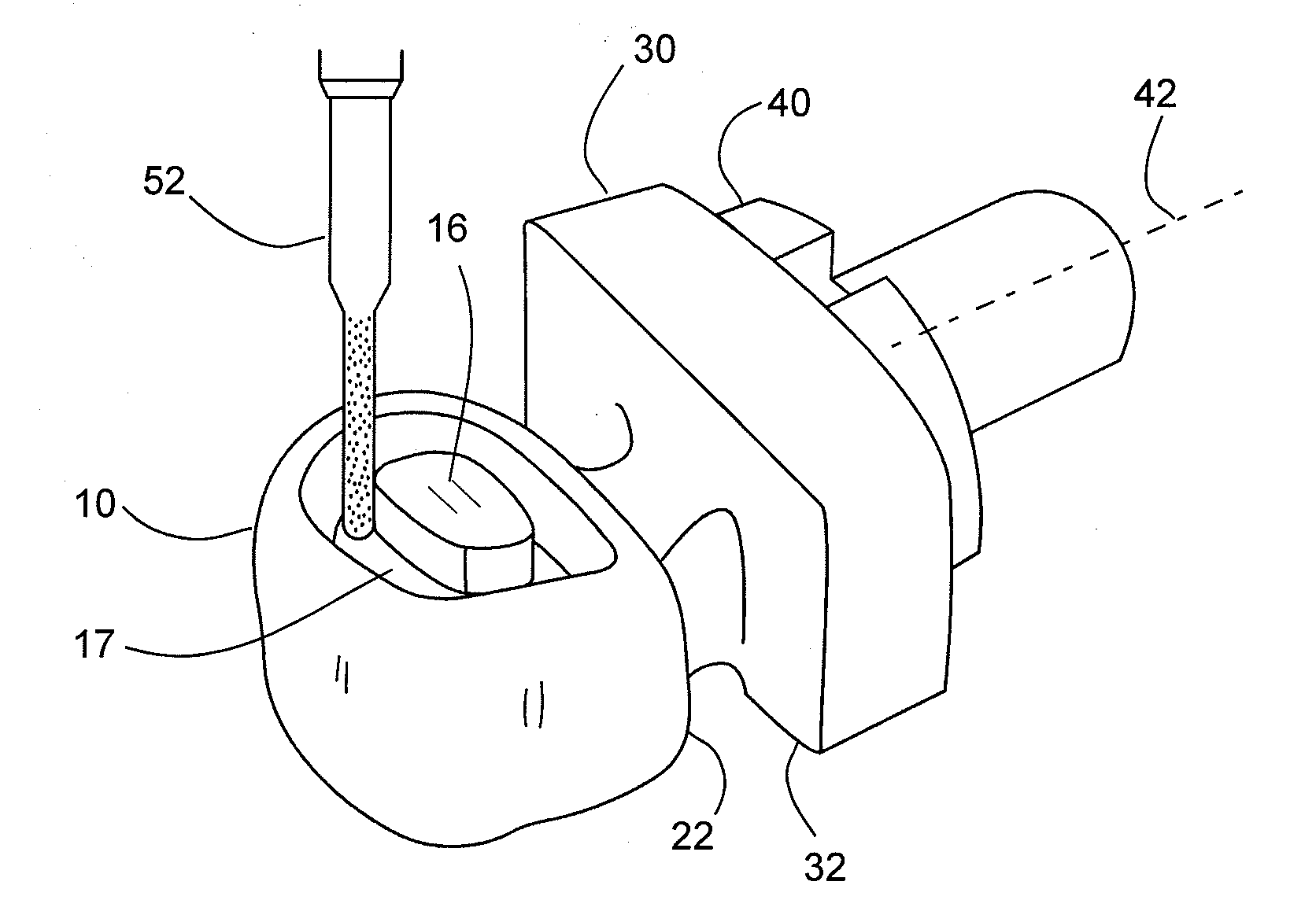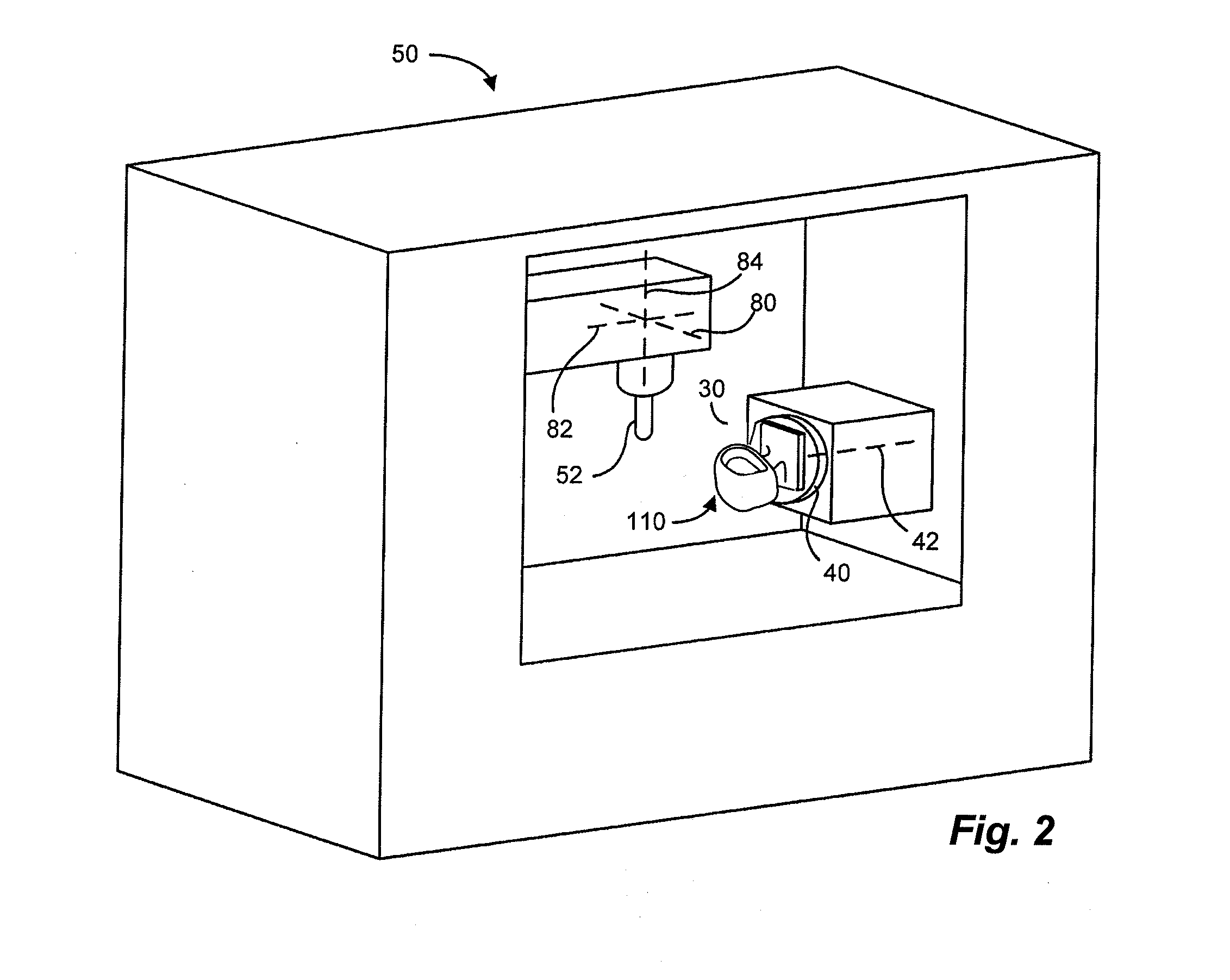Method for machining a dental prosthesis
a technology for dental prostheses and machining methods, which is applied in the field of manufacturing dental prostheses, can solve the problems of reducing affecting the quality of dental prostheses, so as to reduce the likelihood of forming tool failur
- Summary
- Abstract
- Description
- Claims
- Application Information
AI Technical Summary
Benefits of technology
Problems solved by technology
Method used
Image
Examples
Embodiment Construction
)
[0027]The invention provides a method for cutting a dental prosthesis from a workpiece by machining a bottom of the dental prosthesis first, and then subsequently machining a top of the dental prosthesis. In addition, the method provides for first machining a bottom perimeter of the dental prosthesis, and then subsequently machining a bottom cavity of the dental prosthesis. A sweep path (e.g. back and forth from a distal to proximal end) is used to machine the bottom perimeter, and a spiral path (e.g. around from outer to inner and upper to lower) is used to machine the bottom cavity.
[0028]Illustrated in FIGS. 1a and 1b is a dental prosthesis 10 during manufacture in an example embodiment in accordance with the invention. In this embodiment, a workpiece 30 may be attached to a fixture 40. A connector 60 can be between a proximal end 22 of the dental prosthesis 10 and a proximal end 32 of the workpiece 30. Also illustrated is that the dental prosthesis 10 may be formed by a forming ...
PUM
| Property | Measurement | Unit |
|---|---|---|
| relative rotation | aaaaa | aaaaa |
| perimeter | aaaaa | aaaaa |
| strength | aaaaa | aaaaa |
Abstract
Description
Claims
Application Information
 Login to View More
Login to View More - R&D
- Intellectual Property
- Life Sciences
- Materials
- Tech Scout
- Unparalleled Data Quality
- Higher Quality Content
- 60% Fewer Hallucinations
Browse by: Latest US Patents, China's latest patents, Technical Efficacy Thesaurus, Application Domain, Technology Topic, Popular Technical Reports.
© 2025 PatSnap. All rights reserved.Legal|Privacy policy|Modern Slavery Act Transparency Statement|Sitemap|About US| Contact US: help@patsnap.com



